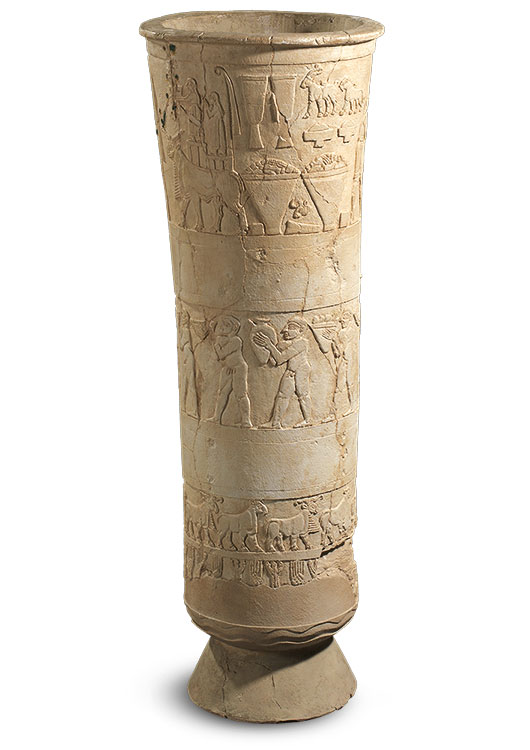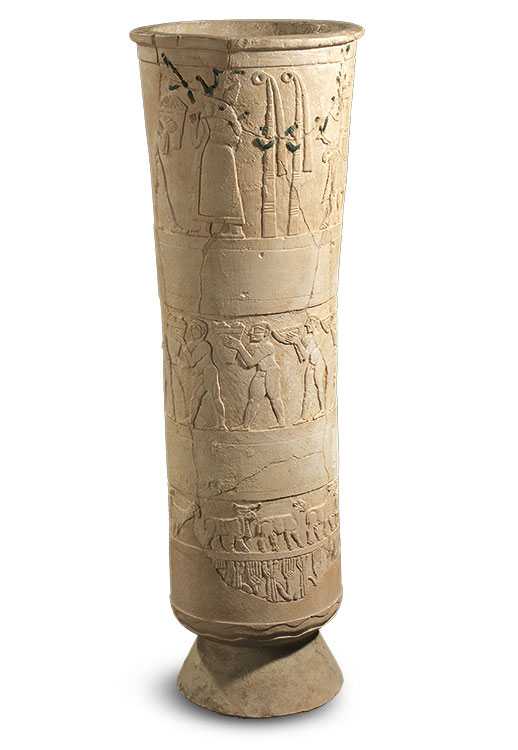This cast of the Uruk Vase, one of the most celebrated artworks from Mesopotamia, is true to the original, even showing ancient marks of repair. Its carving centers on the sustenance of life in ancient Sumer. Wavy lines in the lowest register indicate water, above which are cultivated plants and domesticated animals. Next, nude men bearing offerings stride toward Inanna or her earthly representative, who stands at the entrance of her temple in the top register. Before her, a male attendant carries a basket; behind him lies a partially preserved depiction of an ornately dressed man, possibly a royal figure. The harmony between such a political leader and Inanna, his patron goddess, preserved the prosperity of the land.
Plaster cast of the Uruk Vase
Mesopotamia, Sumerian, Uruk (modern Warka), Eanna Precinct
Late Uruk–Jemdet Nasr period, ca. 3300–2900 BC
Plaster cast
Staatliche Museen Zu Berlin, Vorderasiatisches Museum, Original Excavated 1933–34; VAG 001027
© Staatliche Museen zu Berlin-Vorderasiatisches Museum. Foto: Olaf M. Teßmer.
Sidney Babcock: The Uruk Vase is one of the most famous artworks from Mesopotamia, and rightly so. Excavated in the temple precinct of Uruk, the most prominent metropolis of the time, it is one of the earliest surviving cult vessels in the world. What makes it unique is its spectacular carving representing the cycle of life in ancient Sumer.
The story begins in the lowest register with wavy lines symbolizing the foundation of all life: water, namely the rivers Euphrates and Tigris. Then cultivated plants and domesticated animals enter, setting the stage for the upper register featuring nude men bearing offerings. The principal scene is at the top: Inanna or her priestess stand before the entrance of her temple. Before her is an offering bearer, who is followed by an only partially-preserved figure, the train of whose garment is held by an attendant. This ornately dressed person must have been the ruler, whose concord with Inanna was crucial for the well-being of the land.
Steps were taken in ancient times to preserve this valuable vase for eternity. This cast from Berlin is true to the original, even showing such ancient marks of restoration above Inanna's head. Following the US-led invasion in 2003, the original vase was looted from the Iraq Museum in Baghdad but recovered a few months later.


